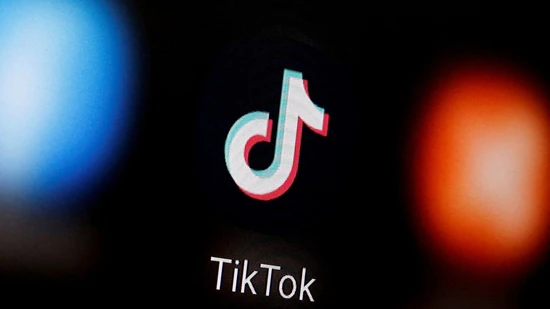
After a five-year hiatus, TikTok has once again become the center of digital buzz in India. The short-form video platform, once a cultural juggernaut with over 200 million users in the country, was banned in June 2020 amid escalating geopolitical tensions and national security concerns. Now, in August 2025, whispers of its return have reignited excitement, confusion, and debate across social media and tech circles.
But is TikTok truly back? Or is this just another glitch in the matrix?
The Spark That Lit the Fire
On August 22, 2025, Indian users began reporting that TikTok’s official website was suddenly accessible. For many, the homepage loaded without issue—a sight unseen since the app’s ban. Screenshots flooded platforms like X (formerly Twitter) and Reddit, with users speculating about a potential relaunch. Some rejoiced, others joked, and many simply asked: “Is TikTok back?”
However, the excitement was short-lived. While the homepage appeared functional, deeper pages like “Newsroom” and “Careers” returned error messages or access-denied notices. The app itself remained unavailable on both Google Play Store and Apple’s App Store in India. ByteDance, TikTok’s parent company, has not issued any official statement regarding a return.
Government Clarifies: No Unblocking Order Issued
Amid the growing speculation, the Indian government swiftly responded. Officials from the Ministry of Electronics and Information Technology clarified that no unblocking order had been issued for TikTok. The app remains banned under Section 69A of the Information Technology Act, 2000, which allows the government to block access to content that threatens national security, public order, or sovereignty.
The sudden visibility of TikTok’s website, according to experts, may be due to technical changes in its content delivery network (CDN) or server configurations—not a deliberate move to re-enter the Indian market. In other words, the platform’s partial accessibility does not equate to a legal or operational comeback.
A Look Back: Why TikTok Was Banned
TikTok’s ban in India was part of a broader crackdown on Chinese apps following the Galwan Valley clashes between Indian and Chinese troops in June 2020. The government cited concerns over data privacy, espionage, and the misuse of user information by foreign entities. Alongside TikTok, 58 other apps—including Shareit, UC Browser, and CamScanner—were removed from Indian app stores.
At the time, TikTok was more than just a social media platform. It had democratized content creation, giving voice to millions of users from Tier-2 and Tier-3 cities. From dance challenges to comedy skits, the app had become a cultural phenomenon. Its sudden disappearance left a vacuum that competitors like Instagram Reels, YouTube Shorts, and Moj rushed to fill.
The Digital Landscape in 2025
Fast forward to today, and India’s short-video ecosystem has evolved dramatically. Homegrown platforms have matured, global giants have expanded their offerings, and creators have diversified across multiple channels. Instagram Reels and YouTube Shorts dominate the mainstream, while apps like Josh, Chingari, and Roposo cater to regional audiences.
In this transformed landscape, TikTok’s potential return raises important questions. Would users flock back to the original platform? Would creators abandon their new homes? And most importantly, would the government allow it?
ByteDance’s Global Challenges
TikTok’s situation in India is not isolated. The platform has faced scrutiny across the globe, particularly in the United States and parts of Europe. Concerns over data privacy, algorithmic manipulation, and foreign influence have led to calls for regulation, bans, and forced divestitures.
In the U.S., TikTok has been under pressure to sell its American operations to a domestic buyer. In the UK, the company has undergone internal restructuring, laying off employees and increasing its reliance on AI for content moderation. These moves suggest a broader strategy to centralize operations and address regulatory concerns.
For ByteDance, India remains a critical market. With its massive user base and vibrant creator economy, a successful re-entry could boost global growth. But without government approval, any such move remains speculative.
The Role of Diplomacy
Interestingly, TikTok’s website reappearance coincides with a thaw in Indo-China relations. Recent diplomatic engagements—including meetings between Prime Minister Narendra Modi and Chinese Foreign Minister Wang Yi—have focused on reopening border trade, resuming direct flights, and promoting investment.
While these developments may signal improved bilateral ties, they do not automatically translate into policy reversals. The Indian government has maintained a cautious stance, emphasizing national security and digital sovereignty.
Public Sentiment: Nostalgia Meets Skepticism
Online reactions to TikTok’s rumored return have been a mix of nostalgia, humor, and skepticism. Memes flooded social media, with users joking about the “virus returning” and reminiscing about their favorite TikTok trends. Some creators expressed excitement, while others questioned the platform’s relevance in today’s ecosystem.
For many, TikTok represents a bygone era—a time when content creation was raw, spontaneous, and accessible. Its absence forced creators to adapt, evolve, and explore new formats. Whether they would return to TikTok, should it become available again, remains uncertain.
What’s Next?
As of now, TikTok is not officially back in India. The website’s partial accessibility appears to be a technical anomaly, not a policy shift. The app remains banned, and government officials have reiterated their stance.
However, the buzz surrounding its return highlights a deeper truth: TikTok still holds a place in India’s digital memory. Its impact on content creation, youth culture, and platform dynamics is undeniable. Whether it returns or not, its legacy continues to shape the future of social media in India.
For ByteDance, the path to re-entry would require more than just technical tweaks. It would demand transparency, compliance with Indian laws, and perhaps even a local partnership or restructuring. Until then, TikTok’s comeback remains a tantalizing possibility—one that continues to spark conversation, curiosity, and controversy.
Conclusion
TikTok’s rumored return to India is a reminder of how deeply digital platforms can embed themselves in cultural consciousness. While the app remains banned, its sudden visibility has reignited public interest and speculation. Whether this leads to a formal comeback or fades as a fleeting glitch, one thing is clear: TikTok’s story in India is far from over.


Leave a Reply